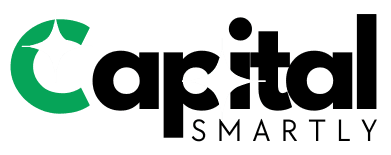advertisement
Literacy programs are key to changing communities. They boost reading skills, get people ready for work, and encourage civic involvement. They help early learners, school kids, and adults, leading to better digital skills.
Adult education covers GED prep and English classes for non-native speakers. Family literacy programs help parents and kids learn together. These efforts improve school success and job skills for adults.
The benefits are huge: more high school graduates, less unemployment, lower crime, and stronger local economies. Groups like ProLiteracy, the American Library Association, and the U.S. Department of Education support these efforts with research and tools.
This article shares real examples and results. It offers advice for those working on literacy programs. It shows how to mix old-school reading lessons with new digital skills and tools.
Understanding Literacy Programs
Literacy programs help people improve their reading, writing, math, and digital skills. They are found in schools, libraries, colleges, and non-profits. These programs offer resources and paths for adult education.
Definition of Literacy Programs
These programs teach basic skills like reading and writing. They also focus on daily tasks like reading forms and instructions. Now, they also cover digital skills, like using devices and the internet safely.
Adult education focuses on basic skills and getting certifications. Early childhood programs use play and reading to teach literacy. Libraries and community centers provide resources tailored to local needs.
Types of Literacy Programs
Programs vary based on who they serve and how they teach. Colleges and adult education centers offer basic education and GED prep. Classes for English learners help immigrants adjust to a new culture.
Early childhood programs like Reach Out and Read and Dolly Parton’s Imagination Library encourage reading. Family literacy programs teach parents and children together. Libraries offer summer reading, tutoring, and outreach programs.
Workplace literacy connects reading skills to job tasks. It uses various teaching methods, including online learning. Funding comes from grants, state funds, foundations, and companies.
| Program Type | Typical Providers | Main Focus | Delivery Methods |
|---|---|---|---|
| Adult Basic Education / GED | Community colleges, adult education centers | Reading skills, math, test prep | Classroom instruction, blended learning |
| ESL / ELL | Nonprofits, literacy councils | Language acquisition, integration | Small groups, tutoring, online modules |
| Early Childhood | Healthcare partners, libraries | Emergent literacy, parent-child reading | Clinic programs, book distributions, workshops |
| Family Literacy | Schools, community centers | Parent education, shared reading | Workshops, combined child-parent sessions |
| Library-led Initiatives | Public libraries | Summer reading, volunteer tutoring | Volunteer matches, programs, outreach |
| Workplace Literacy | Employers, workforce centers | Contextualized literacy for jobs | On-site classes, integrated training |
Importance of Literacy in Communities
Strong literacy levels lift entire neighborhoods. They create pathways to stable jobs, better health choices, and fuller civic life. Community outreach plays a central role when schools, libraries, and nonprofits join forces to run literacy programs that meet local needs.
Economic Advantages
Higher literacy correlates with larger lifetime earnings and lower unemployment. Research from the Organisation for Economic Co-operation and Development and the U.S. Bureau of Labor Statistics shows clear links between education levels and income. Workforce development and adult education help residents gain skills employers want.
Communities that invest in literacy programs attract businesses and reduce long-term public spending. When more people hold steady jobs, reliance on social services falls and criminal justice costs often decline. These shifts strengthen local tax bases and spur reinvestment in schools and infrastructure.
Health Benefits
Health literacy matters for reading prescription labels, following care plans, and using preventive services. The Centers for Disease Control and Prevention report that limited health literacy ties to poorer outcomes and more hospital stays. Community literacy programs with health modules teach practical skills that raise adherence to treatment.
Local clinics and libraries that offer plain-language materials and group sessions see better screening rates and clearer patient communication. That leads to fewer complications, lower emergency visits, and a healthier population overall.
Improved Quality of Life
Reading skills boost civic engagement, volunteerism, and parent involvement in schools. People with strong literacy are more likely to vote, attend meetings, and support neighborhood improvements. Lifelong learning opens doors to new hobbies, online resources, and better decision-making.
Programs aimed at older adults reduce social isolation through book clubs and classes. When residents feel connected, community resilience grows. The combined effect of economic advantages, health benefits, and improved quality of life builds sustainable growth and shared opportunity.
The Role of Local Organizations
Local organizations are key to improving literacy in communities. They connect people to resources, find volunteers, and tailor programs to local needs. This helps services grow and stay true to community needs.
Groups like libraries, community colleges, and nonprofits work together. They share resources, create joint programs, and apply for grants. This teamwork makes literacy programs more effective.
AmeriCorps and volunteer tutors help stretch budgets. They offer one-on-one tutoring and lead reading circles. This makes literacy programs affordable and effective.
Collaborating for Success
Referral networks help social services send clients to classes. Sharing space in libraries and schools cuts costs. Joint grant applications bring in more funding for lasting impact.
Example Initiatives in the U.S.
Big libraries like the New York Public Library offer ESL and digital literacy classes. Literacy councils like Literacy Volunteers of America provide tutoring and workplace support.
Community college consortia offer GED prep and career training. Health systems like Cleveland Clinic run health-literacy workshops in clinics and centers.
| Partner Type | Typical Role | Representative Example |
|---|---|---|
| Public Libraries | Host classes, provide digital access, coordinate volunteers | New York Public Library — ESL and digital skills |
| Community Colleges | GED prep, career training, credential pathways | AEFLA-supported adult education consortia |
| Nonprofit Literacy Councils | One-on-one tutoring, workplace literacy, volunteer training | Literacy Volunteers of America — tutoring programs |
| Health Systems | Health-literacy workshops, patient education materials | Cleveland Clinic and Kaiser Permanente patient programs |
| Corporate Partners | Fund resources, host classes, offer employee volunteers | Local businesses sponsoring adult basic skills classes |
Together, these efforts improve literacy programs. With teamwork and clear roles, local organizations make learning accessible to everyone.
Literacy and Workforce Development
Connecting literacy to job paths boosts local economies and helps adults find stable jobs. Reading, writing, and digital skills make people more job-ready. Programs that align learning with employer needs speed up job entry.
Here are ways literacy programs support job skills. Each method links classroom learning to real-world tasks.
Contextualized instruction teaches literacy in real settings. Students learn to read medical charts for healthcare, follow assembly instructions for manufacturing, and write customer emails for hospitality.
Credential pathways link adult education to certifications and college credits. This makes it easier for students to show employers their skills.
Employer engagement makes sure learning meets job needs. Local businesses offer internships, mock interviews, and on-site training to help new hires stay.
Below are examples of programs that mix literacy with job training.
| Program | Approach | Key Outcomes | Employer Role |
|---|---|---|---|
| Year Up | Technical training, internships, professional development | High placement rates for young adults; many secure full-time roles after internship | Provides internships and mentors; helps shape curriculum |
| Project QUEST (San Antonio) | Employer partnerships, community college pathways, case management | Significant wage gains; increased credential attainment among participants | Defines in-demand skills and hires graduates |
| Literacy Council workplace programs | On-site ESL and basic skills training with local employers | Improved job performance; higher retention and promotion rates | Hosts classes and offers schedule flexibility for workers |
These examples show that combining literacy with job training boosts job chances and wages. When education meets employer needs, skill development is more effective.
Employers’ input in courses helps students learn job-specific skills. This mix of literacy and practical experience boosts confidence and career growth.
Family Literacy: A Special Focus
Family literacy combines adult education, early childhood learning, and parenting support. It aims to strengthen homes and schools. Programs like Parents as Teachers and local Head Start partnerships help raise reading skills.
Community nonprofits, like Dolly Parton’s Imagination Library, give away books. This helps reach more families.

Engaging Parents and Children
Family literacy programs offer hands-on activities for caregivers and children. They include family reading nights and workshops on reading aloud. Bilingual materials help immigrant families.
Parents as Teachers provides screening and guidance for early vocabulary growth. Head Start sites and community centers host sessions on storytelling and dialogic reading. Parents take home books that match their culture.
Lifelong Learning Opportunities
Engaging in shared literacy opens doors to education for the whole family. When parents join classes, they might move into GED or ESL programs. Children get after-school literacy support.
Studies show family-literacy involvement boosts school readiness and vocabulary. It also strengthens parent–school relationships. Family literacy initiatives improve outcomes for adults and children in the long run.
The Impact of Technology on Literacy
Technology changes how we learn and find literacy resources. Now, programs teach more than just reading and writing. They also teach how to use devices, find reliable information online, and stay safe online.
Digital Literacy Programs
Digital literacy means knowing how to use devices and the internet. It also means learning to find trustworthy sources and stay safe online. Community libraries and Goodwill offer classes on these topics.
These classes cover basic computer skills, how to use the internet, and how to find jobs online. They also teach how to communicate digitally. Programs like DigitalLearn.org and library device lending with tech tutoring help.
Funding for these programs comes from federal grants, local donations, and corporate gifts of devices. This support helps more people, both adults and youth, learn.
Innovative Teaching Methods
Blended learning combines in-person tutoring with online learning. This way, students can learn more than just in class. Community colleges and tutors use online resources like Coursera and Khan Academy for literacy lessons.
Apps like Duolingo for Schools and Raz-Kids help with phonics and ESL. Games and adaptive learning software make learning fun and tailored to each student’s needs. This keeps students engaged and helps them learn faster.
During the COVID-19 pandemic, online tutoring and classes became more common. Teachers need training in using technology, and making sure everyone has equal access to it is still a challenge.
Workshops, updated resources, and creative teaching methods make literacy programs better. These efforts help learners gain skills for the real world, whether for work or everyday life.
Addressing Barriers to Literacy
Communities that succeed with literacy start by identifying common obstacles. They take practical steps to make learning easier and reach more people. Programs that tackle these barriers build stronger connections with families and employers.
Overcoming economic barriers is key to making learning accessible. Many adults work multiple jobs and can’t attend daytime classes. Others are held back by transportation costs and childcare needs.
Offer classes in the evenings and weekends. Provide childcare, transportation vouchers, and locations near workplaces. Also, add online classes for those who need to learn from home.
Fund programs with a mix of grants and donations. Use federal, state, and private funds, as well as support from United Way and corporations. Create affordable options with sliding-scale fees. Grants like the Adult Education and Family Literacy Act (AEFLA) and community foundation funds help.
Make programs inclusive by addressing language and cultural needs. Hire bilingual teachers and create materials that respect different cultures. Offer ESL classes and have multilingual staff to welcome all learners.
Ensure programs are accessible to everyone. Use Universal Design for Learning and assistive technologies. Make facilities ADA-compliant and adapt materials for those with vision or cognitive challenges.
Target outreach to reach marginalized groups. Work with reentry programs, migrant centers, rural libraries, and health clinics. Use trauma-informed teaching to support learners who have faced hard times.
Track who joins and stays in programs. Look at participation and retention by demographic. Use this data to improve and guide future literacy efforts.
Success Stories from Community Programs
Community literacy programs show clear results. Reports from ProLiteracy, literacy councils, and colleges share success stories. These stories highlight personal achievements and community changes.
Individuals Who Thrived
A 2019 ProLiteracy report showed adult learners achieving GED and ESL. They found steady jobs and increased their earnings. In Ohio, literacy councils saw parents reading with their kids every night.
This improved early literacy and kindergarten readiness. Older adults in Los Angeles City College classes gained digital skills. They also reported better health and more civic involvement.
Communities Transformed
Studies show literacy programs boost graduation rates and lower unemployment. In a Midwestern city, adult education and partnerships led to more on-time graduations. Small businesses grew where adult learners took workforce training.
Regional literacy coalitions found literate adults volunteering and mentoring. They also took on leadership roles. Stronger school-family connections were seen after investing in literacy.
Success stories prove literacy programs work. Data and testimonials from ProLiteracy and others show progress. Sustained effort leads to real change in communities.
Measuring the Effectiveness of Programs
Clear evaluation makes literacy programs stronger. Funders, staff, and learners need simple ways to track outcomes. Use both numbers and stories to show progress and shape next steps.
Metrics for Success
Quantitative metrics offer concrete proof of change. Common measures include pre/post assessments like CASAS or TABE for adults and DIBELS or kindergarten readiness checks for young children. Track reading level gains, GED attainment, ESL proficiency, employment rates, and wage increases.
Retention and completion rates matter for program design. Community indicators such as improved school attendance, higher graduation rates, and lower crime statistics help connect local outcomes to broader impact. Use standardized tools to compare results over time.
Qualitative metrics capture lived experience. Learner satisfaction, confidence, and parent engagement tell how programs affect daily life. Collect stories about behavioral shifts at home and community attitudes to complement numeric data.
Gathering Feedback for Improvement
Continuous improvement cycles make programs adaptive. Start with needs assessments, follow with formative evaluations, then run focus groups and learner surveys. Invite employer feedback to align curricula with job market needs.
Use data to refine curricula, tweak scheduling, and target resources. Share results with funders, partners, and participants to maintain trust and encourage continued support. Protect privacy with ethical evaluation practices when working with vulnerable populations.
Educational workshops can be both a data source and a delivery method for change. Collect feedback after sessions to adjust content and pacing. Turn insights into action plans for stronger outcomes.
| Measure | Type | Why It Matters |
|---|---|---|
| Pre/post assessment (CASAS, TABE, DIBELS) | Quantitative | Shows academic gains and learning growth over time |
| GED/ESL attainment | Quantitative | Signals credentialing that improves job prospects |
| Retention & completion rates | Quantitative | Indicates program accessibility and relevance |
| Learner surveys & focus groups | Qualitative | Reveals satisfaction, confidence, and areas for change |
| Community indicators (attendance, crime, health) | Quantitative | Demonstrates broader social impact linked to literacy |
| Employer feedback | Qualitative | Aligns skills taught with labor market needs |
Future Trends in Literacy Programs
Literacy programs are evolving to be smarter and more flexible. They will use tools that adjust to each learner’s speed. This will happen in classrooms at libraries and community centers.
These new models will help more people in rural and underserved areas. They will also keep local support strong.
Innovations on the Horizon
AI will soon make learning more personal with adaptive platforms. These will help tutoring reach more places in the U.S. Digital literacy will grow with mobile-first programs and text-based help for those with limited internet.
Micro-credentials tied to jobs will help students find work. Public-private partnerships will improve device access and internet, making these changes work for more people.
The Need for Continued Commitment
Success in literacy programs needs ongoing funding and support. It also needs policy backing and teamwork across sectors. Investing in tutor training and materials for different languages is key.
Community leaders, policymakers, and businesses must see literacy as essential. It’s crucial for the economy, health, and civic life.
By following these trends and staying committed, we can make literacy programs a lasting investment for cities and towns.



